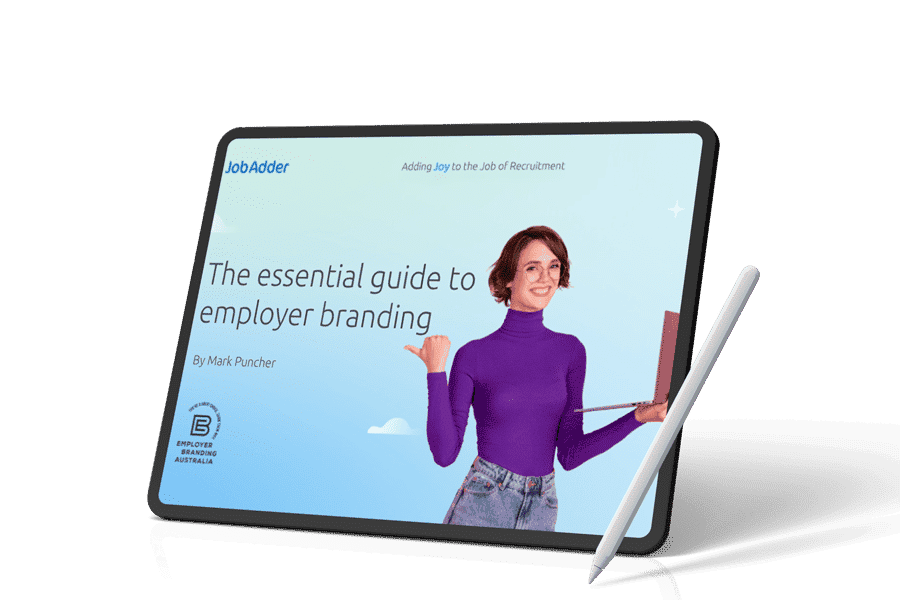Recruitment Blog
How to build a learning and development offering

As the COVID-19 crisis continues, companies are looking at how they can re-skill and upskill their employee and improve retention in a tight talent market through learning and development.
For in-house HR and talent acquisition professionals, the pressure to engage and nurture talent has never been greater.
A strong and comprehensive learning and development offering and program can help in-house HR to invest in their employees and reduce churn.
As the Head of Learning for JobAdder, I’m passionate about education and building a cohesive and effective learning and development offering, both for our internal teams and our JobAdder users.
Below, I’ve detailed how in-house HR professionals can build a learning and development program and why clear objectives are so crucial.
DOWNLOAD OUR FREE EBOOK: The essential guide to employer branding
What are the building blocks of a learning and development offering?
Whether you’re redesigning an inefficient learning and development offering or starting from the ground up and creating your first learning and development program, the building blocks are the same.
To put it simply:
Design. Deliver. Measure. Repeat.
Design: Start backwards
“If you don’t know exactly where you’re going, how will you know when you get there?” – Steve Maraboli
Building an effective learning and development offering starts with clear and measurable organisational objectives and key results (OKRs).
In other words, what does organisational success look like? Once organisational OKRs have been established, each team/department then creates and aligns their own OKRs to those of the organisation.
This process repeats itself until individual team members have OKRs that are aligned to those of their team; ultimately ensuring alignment between individual objectives and results to those of the organisation. This connects each individual’s work to organisational goals.
Once individual OKRs have been established, learning and development activities (formal training, certifications, conferences, knowledge acquisition, skill development, etc) are designed around supporting individuals to achieve their OKRs.
This approach is referred to as ‘backwards design’ because it starts at the finish line and works backwards to identify meaningful actions for each individual to get there.
Employing a backwards design approach also ensures that all learning activities are relevant to objectives and can help to focus learning by removing unnecessary activities that add to the learner’s cognitive load.
The importance of measurable OKRs in your learning and development program
Measurable OKRs will enable you to determine whether or not the established objectives have been met (e.g. knowing when you get there).
For example, it’s important to stay away from objectives such as “employees will understand the importance of empathy.” Understanding can’t be measured because we are unable to define at what point someone understands something.
Rather, the above objective may be improved by stating “employees will be able to explain the importance of empathy in building relationships with their colleagues.”
Using this version of the objective provides a specific desired result and an objective assessment that will allow you to assess the effectiveness of your learning program towards meeting the objective.
For example, can the employee explain the importance of empathy in building relationships with their colleagues? This will produce a clear ‘yes they can’ or ‘no they can’t’ result.
Deliver: Decide what learning and development approach works best for you
The medium(s) in which learning programs are delivered will vary depending on your OKRs, the physical location of team members (distributed or centralized) and resources (availability of trainers and tools).
One effective tool that can assist you in determining the best approach for you is utilising a decision tree to help you arrive at the best delivery medium for learning engagements that lead to meeting each objective.
Many organisations may benefit from a hybrid or blended approach to learning that combines both asynchronous and synchronous engagement opportunities.
Asynchronous learning refers to learning in which there is no real-time interaction with other people (e.g. watching a YouTube video), whereas synchronous learning requires stakeholders to be in the same place at the same time (e.g. traditional in-person training sessions, live webinars, etc.)
By employing a blended approach, learners receive the benefits of both environments, such as the flexibility of asynchronous learning and the real-time feedback offered by synchronous interactions.
If you’re looking to determine the best approach for specific activities, refer to Bloom’s Taxonomy. Objectives that align to the lower levels of Bloom’s Taxonomy (i.e. remembering and understanding) can often be easily accomplished asynchronously, while those that focus on the upper levels of the taxonomy (analyze, evaluate and create) may benefit from the feedback and discussion that derives from real-time interactions.
For example, if the objective is for employees to simply recall your organisation’s values and behaviours, an asynchronous delivery method would be beneficial as it provides the most flexibility.
However, if your objectives require employees to design a framework for creating organisational values, there may be benefits to real-time interactions that allow for critique and feedback. So, in addition to your OKRs determining the ‘what’ of learning, they can also determine the ‘how.’
Adult learning theory: Andragogy
Regardless of medium, you’ll need to be conscious of who your stakeholders are and what matters to them.
Malcolm Knowles, an American educator who theorized adult education, suggests applying these four principles to adult learning:
- Adults need to be involved in the planning and evaluation of instruction (give your employees input on their objectives and key results, as well as how they demonstrate their ability to meet them)
- Experience provides the basis for learning activities (provide employees with learning opportunities that build on familiar experiences and allow for mistakes to be made in a safe environment)
- Adults are most interested in learning that has an immediate relevance to their job or personal life (learning opportunities that align with helping employees achieve their OKRs can have an impact on their lives – promotions, salary increases, performance bonuses, empowerment, work satisfaction, etc.)
- Adult learning is problem-centered rather than content-oriented (employees are often overloaded with information and distractions in both their personal and professional lives, resolving specific problems helps to focus learning on desired outcomes.)
Measure: Assess effectiveness and iterate
“Perfection is achieved, not when there is nothing more to add, but when there is nothing left to take away.” – Antoine de Saint-Exupéry
Measurement should be ongoing and results should lead to iteration in alignment with OKRs (returning to either the design or delivery stages depending on what changes are required).
Utilising measurable objectives and aligning them to related assessments and activities ensures that learners have the opportunity to demonstrate their ability to meet the objectives and managers/evaluators can clearly determine whether or not an objective has been met, providing clarity for all stakeholders. Objective-based learning programs also ensure that learning is meaningful and relevant without overwhelming learners with content.
For example, if the objective is “employees will be able to explain the importance of empathy in building relationships with their colleagues,” employees need to be given the opportunity to demonstrate their ability to do so.
How they demonstrate their ability to meet the objective could (and should) vary by employee, based on their role and preferences (see the first point under adult learning).
Again, because we are focused on objectives, we have built-in flexibility for how they are met, allowing for individual creativity and ownership.
Moving beyond compliance in your learning and development offering
The success of your learning and development program won’t be measured by how much you offer, but rather, by the impact it has on the organisation.
Well-aligned organisational, team and individual OKRs will ensure each employee has clear expectations and the tools and opportunities to achieve them.
Aligning learning to objectives enables organisations to move beyond simply offering training for compliance and ties it to personal and organisational success.
Repeat: Continuous improvement is crucial
Once you’ve progressed through the above stages, you can implement what you’ve observed and measured, continuously improving your learning and development offering as it evolves.
Here at JobAdder, we’re committed to continuous education and development, whether it’s around training for new tech tools or learning how to better serve our users. We’re always happy to have a chat, so get in touch with our team now!
Need help building your employer brand? Our free eBook has you covered…

Related blog posts

To excel in the competition for top talent, proactive workforce planning is essential. Traditional methods struggle to adapt to evolving …
Ready to get started?
Talk to one of our friendly team members



